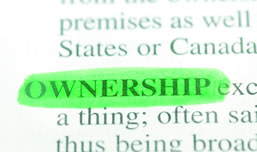Fair Use: Copyright Cure-all or Distraction?
The United Kingdom's ""Independent Review of IP and Growth", commonly known as the "Hargreaves Review", will shortly report its findings "on how well the current IP system serves to help promote entrepreneurialism, economic growth, social and commercial innovation."
The United Kingdom's "Independent Review of IP and Growth", commonly known as the "Hargreaves Review", will shortly report its findings "on how well the current IP system serves to help promote entrepreneurialism, economic growth, social and commercial innovation." The quest to find the best ways of promoting and fostering innovation through the UK's IP system is at the heart of the Hargreaves review. One of the key debates that the review has to face is whether the UK (or, more accurately in light of the Information Society Directive, the European Union) should introduce a fair use defence to copyright infringement to support innovation. We discuss here the opposing views in the debate and suggest that, rather than focussing on the fair use debate, more attention should be focussed on other improvements which might smooth the wheels of innovation.
The list of prescriptive exceptions/defences to copyright infringement in the UK copyright regime is often compared unfavourably to the more flexible and adaptable "fair use" defence in the US. The Copyright, Designs and Patents Act in the UK contains 64 sections which set out the "acts  permitted in relation to copyright works". At first sight, this might suggest that UK law provides users of copyright works with a wide range of flexible and useful defences. Closer inspection, however, reveals that the "closed list" approach UK law takes to exceptions/defences to copyright infringement might not provide as much flexibility to users as an open ended "fair use" standard such as that used in the US, although the end result may, in many cases, be the same.
permitted in relation to copyright works". At first sight, this might suggest that UK law provides users of copyright works with a wide range of flexible and useful defences. Closer inspection, however, reveals that the "closed list" approach UK law takes to exceptions/defences to copyright infringement might not provide as much flexibility to users as an open ended "fair use" standard such as that used in the US, although the end result may, in many cases, be the same.
The fair use battle grounds
The battle grounds are clear: "creators" perceive fair use as an expensive and uncertain way of facilitating use of copyright material. Would-be "exploiters" of creators' works perceive fair use as an important potential way to adjust the copyright system more in their favour, introducing the flexibility and technology neutrality that the US has benefited from for the past 170 years and that has propelled them to the cutting edge of the digital economy.
The creators
 The creators argue that the current closed list regime provides the best environment in which innovation can prosper, at the same time as respecting the need to protect and incentivise creation of the copyright works on which the exploiters rely. Sufficient innovation takes place but always via the creator's consent, the creator being seen as the central cog in the innovation wheel. The potential benefits of introducing fair use are outweighed by the uncertainty generated by its generally applicable open-ended standards and the costs of the litigation required to resolve the issue. Better, they say, to have the certainty of clear boundaries, at which clear licensing practices can develop than rely on expensive and voluminous litigation to set when permissions are required. Of course, exploiters, face risks in closed list regimes. The main one being whether the creator will give (or needs to give) its consent i.e. is there an activity that needs to be licensed and, if it falls outside one of the list of defences, will that licence be given?
The creators argue that the current closed list regime provides the best environment in which innovation can prosper, at the same time as respecting the need to protect and incentivise creation of the copyright works on which the exploiters rely. Sufficient innovation takes place but always via the creator's consent, the creator being seen as the central cog in the innovation wheel. The potential benefits of introducing fair use are outweighed by the uncertainty generated by its generally applicable open-ended standards and the costs of the litigation required to resolve the issue. Better, they say, to have the certainty of clear boundaries, at which clear licensing practices can develop than rely on expensive and voluminous litigation to set when permissions are required. Of course, exploiters, face risks in closed list regimes. The main one being whether the creator will give (or needs to give) its consent i.e. is there an activity that needs to be licensed and, if it falls outside one of the list of defences, will that licence be given?
The exploiters
The exploiters, on the other hand, argue that a fully innovative economy needs the support of the flexibility and openness of a fair use system. The costs of uncertainty will be outweighed by the benefits of pro-innovation judgments that will eventually be created through litigation. Of course, these arguments are based on the assumption that a fair use system inevitably favours innovation and transformative uses. In the hands of judges in a copyright regime which is set-up differently from the US and balanced more in favour of the creator than promoting "progress of science and useful arts", fair use may not provide the licence to innovate that it is assumed to do in the US.
The risks faced by exploiters in fair use systems are in one sense the same as those faced in the closed list system: is the exploiter carrying out an activity that needs to be licensed (if no defence applies)? The next stage risk is different, however: does the fair use defence, as interpreted by the courts, mean the exploiter does not need a licence? At the boundaries of fair use (where, almost inevitably, exploiters will lie) this question will not receive the clear answer the closed-list will provide (even if that answer may be that a licence is required). The answer would more often have to be found through (high-cost) fair use litigation than it would in a closed list system. Statistics suggest that there is much more fair use litigation in the US than there is defences/exceptions litigation in the UK.
How best to address the risks posed by exploiters?
 Both regimes, then, involve exploiters taking risks; risks that no realistic copyright regime could hope to remove, even through the most prescriptive and extensive list of exceptions. The question is, which risk profile best serves promotion of innovation: the risk that a court may find that a fair use defence does not apply or the risk that a creator may not licence the exploiter to carry out the activity (in the absence of any of the closed-list of defences). It seems preferable that exploiters and creators are brought together earlier on in the process, which the closed-list system is more likely to promote: after all, their interests are not necessarily antagonistic. Exploiters need creators to produce content to form part of their innovative services and products; creators need exploiters to generate the revenue to reward the creation and generate further creation. In any case, exploiters may well become creators, from whom second-generation exploiters may require permissions in future. The focus of the Review could more profitably be on the circumstances in which creators and exploiters are able to come together to agree on how works might be exploited.
Both regimes, then, involve exploiters taking risks; risks that no realistic copyright regime could hope to remove, even through the most prescriptive and extensive list of exceptions. The question is, which risk profile best serves promotion of innovation: the risk that a court may find that a fair use defence does not apply or the risk that a creator may not licence the exploiter to carry out the activity (in the absence of any of the closed-list of defences). It seems preferable that exploiters and creators are brought together earlier on in the process, which the closed-list system is more likely to promote: after all, their interests are not necessarily antagonistic. Exploiters need creators to produce content to form part of their innovative services and products; creators need exploiters to generate the revenue to reward the creation and generate further creation. In any case, exploiters may well become creators, from whom second-generation exploiters may require permissions in future. The focus of the Review could more profitably be on the circumstances in which creators and exploiters are able to come together to agree on how works might be exploited.
The most important questions in this context revolve around the ease at which would-be exploiters can identify copyright owners and obtain licences from them. Finding ways to enable and facilitate constructive dialogue between the opposed but complementary constituencies should be the key focus of the Review.
Looking forward to the Review's report
We, along with the entire copyright community, eagerly await the Review's report. Its recommendations will hopefully be presented in a way which reflects the Review's answers to the most fundamental questions any copyright, or indeed intellectual property regime, faces: what is the ultimate purpose of that regime and how best can that purpose be achieved, balancing the interests of creators and innovators/users? Understanding where the UK sits in this debate should be a necessary precursor to answering the more technical and practical questions about fair use and licensing regimes and practices posed by this piece.
If you have any questions on this article please contact us.


Adam Rendle
The copyright "fair use" debate is important but should not distract from the more fundamental questions the UK's intellectual property review should consider.
"Finding ways to enable and facilitate constructive dialogue between the opposed but complementary constituencies should be the key focus of the Review."

